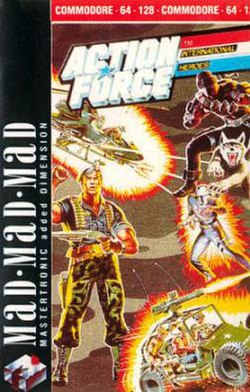This article needs additional citations for verification .(October 2017) |
| Action Force | |
|---|---|
 | |
| Developer(s) | The Gang of Five |
| Publisher(s) | Virgin Games |
| Designer(s) | Martin Wheeler Link Tomlin |
| Platform(s) | ZX Spectrum, Commodore 64, Amstrad CPC |
| Release | 1987 |
| Genre(s) | Puzzle, shoot 'em up |
| Mode(s) | Single-player |
Action Force: International Heroes is a video game released by Virgin Games in 1987 for the ZX Spectrum and Commodore 64, and in 1988 for the Amstrad CPC. The game is set in the world of the Action Force (G.I. Joe) toys by Hasbro. The ZX Spectrum version of the game differs notably from the Commodore and Amstrad versions.
